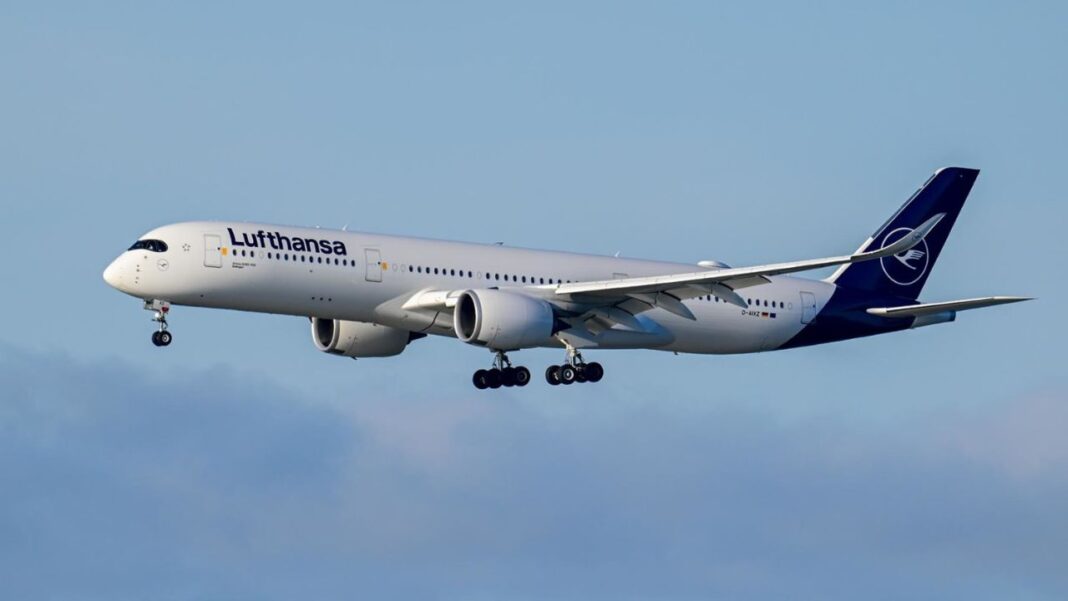The Alarming Incident: Indian Man Attacks Teenagers on a Plane
Introduction to the Incident
In recent news that has shocked many, an Indian man, Praneeth Kumar Usiripally, allegedly assaulted two teenagers on a Lufthansa flight, resulting in significant disturbance and a diversion of the airplane to Boston Logan International Airport. This alarming episode unfolded on a Saturday, invoking questions about passenger safety and the implications of in-flight misconduct.
Details of the Incident
According to a statement from the Attorney General’s Office, the disturbing episode occurred on a routine flight. Reports indicate that Usiripally first struck a 17-year-old passenger on the shoulder with a metal fork. Following his initial attack, he allegedly struck another 17-year-old male passenger on the back of the head, causing visible injury to the second young man.
Passengers and crew were likely alarmed by the sudden violence, prompting immediate action. The decision to divert the flight highlights the seriousness of the situation, as ensuring the safety and comfort of all aboard became the priority. Such in-flight disturbances can lead to severe consequences, not only for the passengers involved but for airline operations as a whole.
Legal Consequences
Following the incident, the legal ramifications for Usiripally are significant. Assault aboard an aircraft is a federal offense in the United States, with potential penalties including fines and imprisonment. Charges could range from simple assault to more severe charges, depending on the injuries sustained by the victims and the intent behind the attacks.
The Federal Bureau of Investigation (FBI) typically investigates such incidents, working closely with airline representatives and local law enforcement to gather comprehensive evidence. This process ensures that all angles are addressed in the pursuit of justice for those impacted.
Impact on Airline Safety Protocols
Events like this raise critical concerns regarding passenger safety in the aviation industry. Airlines have stringent protocols in place to handle unruly behavior, but the nature of such incidents often prompts discussions on enhancing security measures. This could include more thorough screening processes, increased staff training to handle aggressive behavior, and even better communication systems aboard aircraft to alert crew members of issues in real-time.
Moreover, this incident raises a crucial discussion about the mental health and behavioral assessments of passengers prior to boarding. Airlines may need to explore additional solutions to mitigate risks associated with potentially unstable individuals flying.
The Role of Witnesses
Witnesses play a vital role during incidents of this nature. Their accounts can assist law enforcement in piecing together the sequence of events. In crowded settings like airplanes, bystanders may feel compelled to intervene, but the risks of escalating violence can make this a dangerous choice.
It’s essential for passengers to understand the proper protocols to follow during such incidents. Alerting flight attendants and remaining calm can help de-escalate a situation ensuring everyone’s safety.
Community Reactions
News of this incident has certainly resonated across communities, prompting discussions about safety and behavior in shared public spaces like airplanes. Many are expressing concern about the potential for increased violence in transit systems and the need for greater vigilance.
Social media platforms have become hotbeds for debate, where people express their thoughts on how society handles incidents of aggression and the impact of such actions on young individuals. Individuals have highlighted the need for educational programs aimed at conflict resolution and coping mechanisms for stress, especially for those in high-pressure environments.
Cultural Implications
This incident also raises questions about cultural perceptions of conflict and aggression. Understanding how different cultural backgrounds view confrontations can offer insights into passengers’ behaviors in stressful situations.
Furthermore, this specific event might perpetuate negative stereotypes about certain groups, underscoring the need for awareness and education to foster greater understanding among diverse communities. This highlights a crucial intersection between cultural awareness and public safety.
Conclusion
As society continues to grapple with issues of public safety and personal conduct, incidents like these serve as stark reminders of the complexities involved. The implications extend beyond the flight itself, touching upon crucial areas such as legal accountability, community reactions, airline policies, and cultural considerations. The focus now shifts to how such issues will inform future protocols and public discourse surrounding safety in shared transit spaces.



